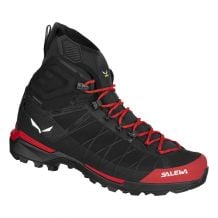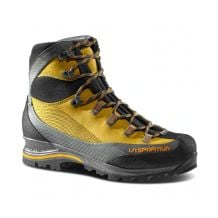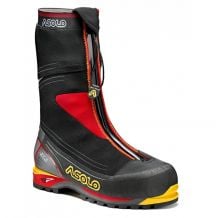Sign in
Contact
Mountain boots
-

 Mountaineering boots GARMONT G-Radikal Gore-Tex (Poppy Orange/Risk Red)295.92 €-20%
Mountaineering boots GARMONT G-Radikal Gore-Tex (Poppy Orange/Risk Red)295.92 €-20% -


 Salewa ORTLES LIGHT MID PTX (Flame/Black) women's shoe270.00 €-10%
Salewa ORTLES LIGHT MID PTX (Flame/Black) women's shoe270.00 €-10% -

 SALEWA MS ORTLES COULOIR (Black/Black)720.00 €-10%
SALEWA MS ORTLES COULOIR (Black/Black)720.00 €-10% -

 Mountaineering boots GARMONT Pinnacle II Gore-Tex (Black/Lava Red)239.92 €-20%
Mountaineering boots GARMONT Pinnacle II Gore-Tex (Black/Lava Red)239.92 €-20% -

 Mountaineering boot GARMONT Ascent Gore-Tex (Radiant yellow/Red) Men's154.00 €-29%(1)
Mountaineering boot GARMONT Ascent Gore-Tex (Radiant yellow/Red) Men's154.00 €-29%(1) -

 Mountaineering boots La Sportiva Trango Trk Leather Gore-Tex (Savana/Tiger)...220.50 €-10%(1)
Mountaineering boots La Sportiva Trango Trk Leather Gore-Tex (Savana/Tiger)...220.50 €-10%(1) -

 AKU Aurai DFS GTX (black orange) men's shoes370.93 €-30%
AKU Aurai DFS GTX (black orange) men's shoes370.93 €-30% -

 Mountaineering boots GARMONT Ascent Gore-Tex (vallarta blue/yellow) Men's172.42 €-25%(1)
Mountaineering boots GARMONT Ascent Gore-Tex (vallarta blue/yellow) Men's172.42 €-25%(1) -

 Glacier climbing shoes Asolo Comp XT Evo (Black/Red) Men's349.90 €-36%
Glacier climbing shoes Asolo Comp XT Evo (Black/Red) Men's349.90 €-36% -

 Mountaineering shoes Asolo Mont Blanc GV (BLACK/RED) Men519.96 €-20%
Mountaineering shoes Asolo Mont Blanc GV (BLACK/RED) Men519.96 €-20% -

 Mountaineering boot La Sportiva G-tech (Black/Yellow) Men's558.00 €-10%
Mountaineering boot La Sportiva G-tech (Black/Yellow) Men's558.00 €-10% -


 Mountaineering boot Scarpa Phantom 6000 HD (Black Bright Orange)799.00 €-4%
Mountaineering boot Scarpa Phantom 6000 HD (Black Bright Orange)799.00 €-4% -


 Mountaineering boots La Sportiva Olympus Mons Cube (Yellow/Black)891.00 €-10%
Mountaineering boots La Sportiva Olympus Mons Cube (Yellow/Black)891.00 €-10% -

 Mountaineering boots Scarpa Ribelle HD (Tonic) Men's339.00 €-5%
Mountaineering boots Scarpa Ribelle HD (Tonic) Men's339.00 €-5% -

 Mountaineering boots La Sportiva Trango Trk Leather Gore-Tex (Ivy/Tango Red)...220.50 €-10%
Mountaineering boots La Sportiva Trango Trk Leather Gore-Tex (Ivy/Tango Red)...220.50 €-10% -

 Mountaineering boots La Sportiva Aequilibrium LT GTX (Black/Yellow) Men's315.00 €-10%(3)
Mountaineering boots La Sportiva Aequilibrium LT GTX (Black/Yellow) Men's315.00 €-10%(3) -

 Mountaineering shoes Scarpa Mont Blanc Pro Gore-Tex (Green Blue) Women499.00 €-5%
Mountaineering shoes Scarpa Mont Blanc Pro Gore-Tex (Green Blue) Women499.00 €-5% -

 Mountaineering boot La Sportiva Olympus Mons Cube S (Yellow/Black)891.00 €-10%
Mountaineering boot La Sportiva Olympus Mons Cube S (Yellow/Black)891.00 €-10% -

 Mountaineering boots La Sportiva Nepal Extreme (black yellow) Men's349.90 €-16%(4)
Mountaineering boots La Sportiva Nepal Extreme (black yellow) Men's349.90 €-16%(4) -

 Mountaineering boots La Sportiva Nepal Evo Gore-Tex (Yellow)445.50 €-10%(2)
Mountaineering boots La Sportiva Nepal Evo Gore-Tex (Yellow)445.50 €-10%(2) -

 Mountaineering boot Lasportiva Trango Tower Extreme Gore-Tex (Black/Yellow) Men355.50 €-10%(2)
Mountaineering boot Lasportiva Trango Tower Extreme Gore-Tex (Black/Yellow) Men355.50 €-10%(2) -

 Mountaineering boots La Sportiva Nepal Cube Gore-Tex (Black/Yellow) Men's490.50 €-10%(7)
Mountaineering boots La Sportiva Nepal Cube Gore-Tex (Black/Yellow) Men's490.50 €-10%(7)
How do you choose a pair of mountain boots for mountaineering?
There are three main criteria in the field of technical mountain footwear: performance, protection and safety. A fourth essential aspect is comfort.
Comfort is of the utmost importance, as it determines our enjoyment of sporting activities. Indeed, putting on shoes that cause pain and blisters can compromise our safety. The pain we feel when placing our foot on the ground will make us less attentive, reducing the quality of our support and potentially leading to an accident.
Once we've decided on the type of footwear we need, whether rigid, semi-rigid or hiking boots, it's crucial to make the right choice to guarantee our safety during the sport.
Last but not least, safety is an essential factor not to be neglected, especially in the context of modern mountaineering, where the emphasis is often on lightness and speed of ascent. However, it is crucial to choose your equipment wisely. Safety must always come first. Not everyone can tackle a 4,000-meter summit in a pair of trail running shoes. Whatever your choice, it's essential to keep safety in mind at all times.
WHICH STIFFNESS FOR A PAIR OF MOUNTAINEERING BOOTS: SEMI-RIGID OR RIGID?
Semi-rigid boots
Most of these shoes are also equipped with a sole compatible with semi-automatic crampons, making them suitable for winter use on icy terrain (with the exception of ice climbing).
Rigid shoes
In the category of rigid shoes, you'll need to consider the following points:
SINGLE OR DOUBLE BOOTS: WHAT CHOICE SHOULD YOU MAKE?
Single mountaineering boots
Modern single boots offer excellent protection while keeping weight and volume to a minimum. This lightness stems from the use of specific materials in their manufacture, while their seamless design helps to reduce overall weight. Advances in research and development have made it possible to achieve high levels of protection while minimizing fatigue thanks to their light weight. What's more, they improve agility thanks to their less bulky design, making them more suitable for a variety of activities.
Some models in this category also provide thermal insulation thanks to their various internal layers, using the latest technologies, while maintaining a very low weight/heat/volume ratio. What's more, these shoes often feature an integrated gaiter for added protection. In recent years, several models have become particularly popular in mountaineering, such as La Sportiva G5, Scarpa Phantom Tech.
Dual mountaineering boots: thermal versatility for mountaineering
The evolution of single boots has led double boots to specialize in high-altitude expeditions, such as the Andes and Himalayas, or in situations where maximum thermal insulation is crucial.
What are the advantages of this type of footwear? Apart from their undeniable contribution to thermal insulation, the main advantage lies in the multi-day outings typical of mountain expeditions. Indeed, when you spend several days in the mountains and sleep in tents or outside refuges, drying a pair of single boots can become complicated. A pair of double boots, on the other hand, allows the inner liner to be inserted into the sleeping bag to dry, ensuring optimum comfort the following day. This contrasts with single boots, which can remain frozen or damp depending on night-time mountain conditions.
CRAMPON COMPATIBILITY: AUTOMATIC AND SEMI-AUTOMATIC
Most rigid boots are designed to be compatible with the use of automatic crampons, while the majority of semi-rigid boots can accommodate semi-automatic crampons. However, there are exceptions to this rule, where the use of strap crampons will be necessary.
The choice of crampon type will depend primarily on the type of boots you own, as well as the activity you intend to practice. However, new crampon models, such as Edelrid's Shark and Petzl's new models, offer versatile fastening systems that can be used with straps, in semi-automatic or automatic mode.
IN SUMMARY
Mountaineering boots have undergone a major evolution in recent years, thanks to the use of new materials that reduce the volume and weight of boots. Your choice of footwear should be carefully considered, as your safety as you progress will largely depend on it. When making your selection, consider the activity you're planning, the terrain you'll be working on, the level of difficulty, your own skill level and experience. And don't forget to choose a half-size or a full size larger than your usual shoe size to avoid compressing your toes at the front of the shoe and risking black toenails.
We wish you the best of luck in your choice and happy mountain excursions.

































